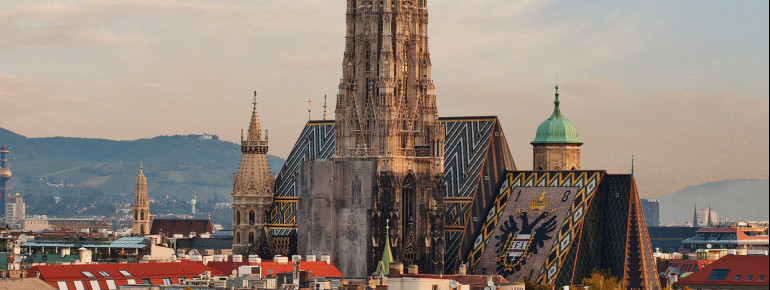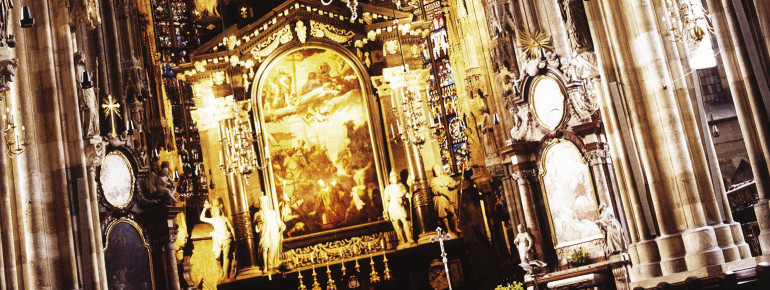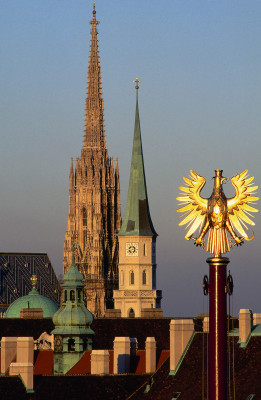Contents
Description
Stephansdom in Vienna, also known in English as St. Stephen's Cathedral, is the Austrian capital's most important landmark. It attracts roughly 3 million visitors a year. Seven masses take place there every day, ten on Sundays, with some of them being broadcast on tv. The cathedral is around 350 ft long, 112 ft wide, and 92 feet high. Its most striking feature, the 446 ft southern tower known by locals as "Steffl" can be visited seperately.
Significant Features
St. Stephen's Cathedral gets its characteristic look from a steep Gothic roof, covered in 230,000 colourful glass tiles. Another interesting feature is a bell called "Pummerin", located inside the northern tower, that only rings on special occasions. Visitors can access it with an elevator. Furthermore, the catacombs hold the tombs of two important figures linked to the cathedral's history: Rudolf IV, Duke of Austira, and Frederick III, thanks to whom the cathedral was one of the first ones in Europe to be finished in the Middle Ages.
Historical Information

The Roman Cathedral of St. Stephen was founded in 1137, consecrated in 1147, and re-consecrated after reconstructions in 1263. The Western wall with its Romanesque gallery dates back to that period, and is nearly unaltered to this day. Over the centuries, additions and reconstructions were marked by gothic, baroque, and classicistic influences. Truculent distructions during World War II led to extensive renovations in the 1950s.
Interesting facts
- The day pass at Stephansdom (St. Stephen's Cathedral) is €7 making it one of the 10 cheapest tourist Attractions in Austria.
How to get there
Stephansdom is located in Vienna's inner city, and easily accessible on public transport. U1 and U3 subway lines stop right at "Stephansplatz", only a few steps away from the cathedral.








